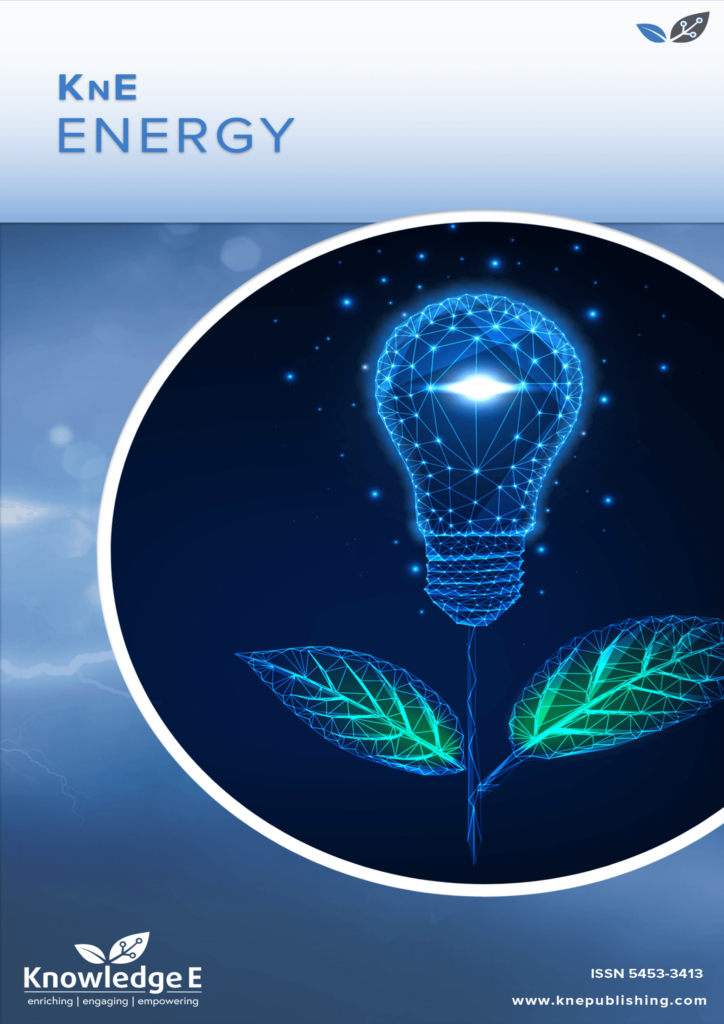
KnE Energy
ISSN: 2413-5453
The latest conference proceedings on energy science, applications and resources
Radionuclide Disperse To Environtment From Pwr Reactor On Severe Accident Condition Using Maccs Program
Published date: Sep 20 2016
Journal Title: KnE Energy
Issue title: International Conference on Nuclear Energy Technologies and Sciences (2015)
Pages: 106-114
Authors:
Abstract:
The atmosphere is an important pathway in the transfer of radionuclides from nuclear power plants into the environment and population. Acceptance of radiation dose to the environment and population affected by the radionuclides release and site conditions surrounding of the nuclear power plant. The radionuclides release in the atmosphere is determined by the dispersion coefficient parameter. The aim of this paper is to obtain dispersion coefficient and radionuclide released in Sebagin (West Bangka district) caused by severe accident condition from the PWR Nuclear Power Plant. Dispersion analysis of radionuclides into the environment from nuclear power PWR on severe accident conditions have been done using MACCS program. Reference for the calculation of source term fraction is selected from calculation results of the MELCOR computer code and it is implemented to PWR reactors Westinghouse 3411 MWth subject. The calculation of radionuclides release performed using MACCS program for aspiring nuclear power plant site in West Bangka. Simulation calculations for the area radius from 0.80 kmup to 20 km from the nuclear power plant site are performed. Meteorological datas used in calculation are the meteorology data from Sebagin meteorological stations for the years of 2012 period. The result is the dispersion coefficient decreases as a function of time and distance. The concentration of radionuclides through soil pathway decreases as a function of the distance, and the dominant contributor of radionuclide radiation Xe-133 and I-131. Radionuclide concentrations obtained through the air pathway decreases as a function of distance, and dominant contributors of radionuclide radiation is contributed also from I-131 and Xe-133. The presence of I-131 radionuclides are giving dangerous to humans, it is necessary to further treatment for prevent its impacts.
References:
[ 1 ] Robert M, Csilla V, Istvan L, Simulation of Accidental Release Using a Coupled Transport (TREX) and Numerical Weather Prediction (ALADIN) Model, Quarterly Journal of the Hungarian Meteorological Service, Vol. 114, No. 1–2, January – June 2010, pp. 101–120
[ 2 ] Moosung J, Seok W.H, A Study on Risk Assessments Using the MACCS Code for a Nuclear Power Plant, Journal of Nuclear Science and Technology, Supplement 4, p 418-422, March 2004
[ 3 ] Chanin D.I, Sprung J.l and colleagues MELCOR Accident Consequence Code System (MACCS) User Guides, U.S Nuclear Regulatory Commission, Washington, DC 20555, 2010
[ 4] Juliana P.D, Paulo F. F, and colleagues, Atmospheric Dispersion and Dose Evaluation Due to the Fall of a Radioactive Package at a LILW Facility, International Journal of Energy Engineering, Vol 3, p 119-126, 2013
[ 5 ] G.D. Rolpha, F. Ngana, R.R. Draxler, Modeling The Fallout from Stabilized Nuclear Clouds Using The HYSPLIT Atmospheric Dispersion Model, Journal of Environmental Radioactivity, Volume 136, Pages 41–55, October 2014
[ 6 ] Till J. E, Rood A.S, and colleagues, Comparison of the MACCS2 Atmospheric Transport Model with Lagrangian Puff Models as Applied to Deterministic and Probabilistic Safety Analysis, Journal of Health Physics, Volume 107 - Issue 3 - p 213–230, September 2014
[ 7 ] François V. D, Bertrand L,Vladimir S, and colleagues, Atmospheric Transport Modeling with 3D Lagrangian Dispersion Codes Compared with SF6 Tracer Experiments at Regional Scale, Science and Technology of Nuclear Installations, Volume 2007 (2007), Article ID 30863, 13 pages
[ 8 ] Pande. M.U, dan Widodo, S. Penentuan Koefisien Dispersi Atmosferik untuk Analisis Kecelakaan Reaktor PWR di Indonesia, Jurnal Teknologi Reaktor Nuklir Vol. 14 No.2 Juni 2012, Hal. 121-132
[ 9 ] Pande M. U, Sri K, Pane J.S., Analisis Kecelakaan Parah pada Pressurized Water Reaktor dengan Backwards Method, Jurnal Teknologi Reaktor. Nuklir Vol. 15 No.1 Februari 2013, Hal.12-26
[10] Scott G.A, Kenneth C.W, and colleagues, Assessment of Severe Accident Sourceterms in Pressurized-Water Reactors with a 40% Mixed-Oxide and 60% Low- Enriched Uranium Core Using MELCOR 1.8.5, SANDIA National Laboratories, Printed April 2010.
[ 11 ] X. Davoine and M. Bocquet, Inverse modeling-based reconstruction of the Chernobyl source term available for long-range transport, Atmos. Chem. Phys., 7, 1549–1564, 2007, p 1550-1558
[ 12] Joong M.Y, Glaser R. Atmospheric Dispersion Analysis Using MACCS2, International Congress on Advances in Nuclear Power Plants, (ICAPP ‘04). Pittsburgh. PA; 2004; June 13- 17, United States; 2004.